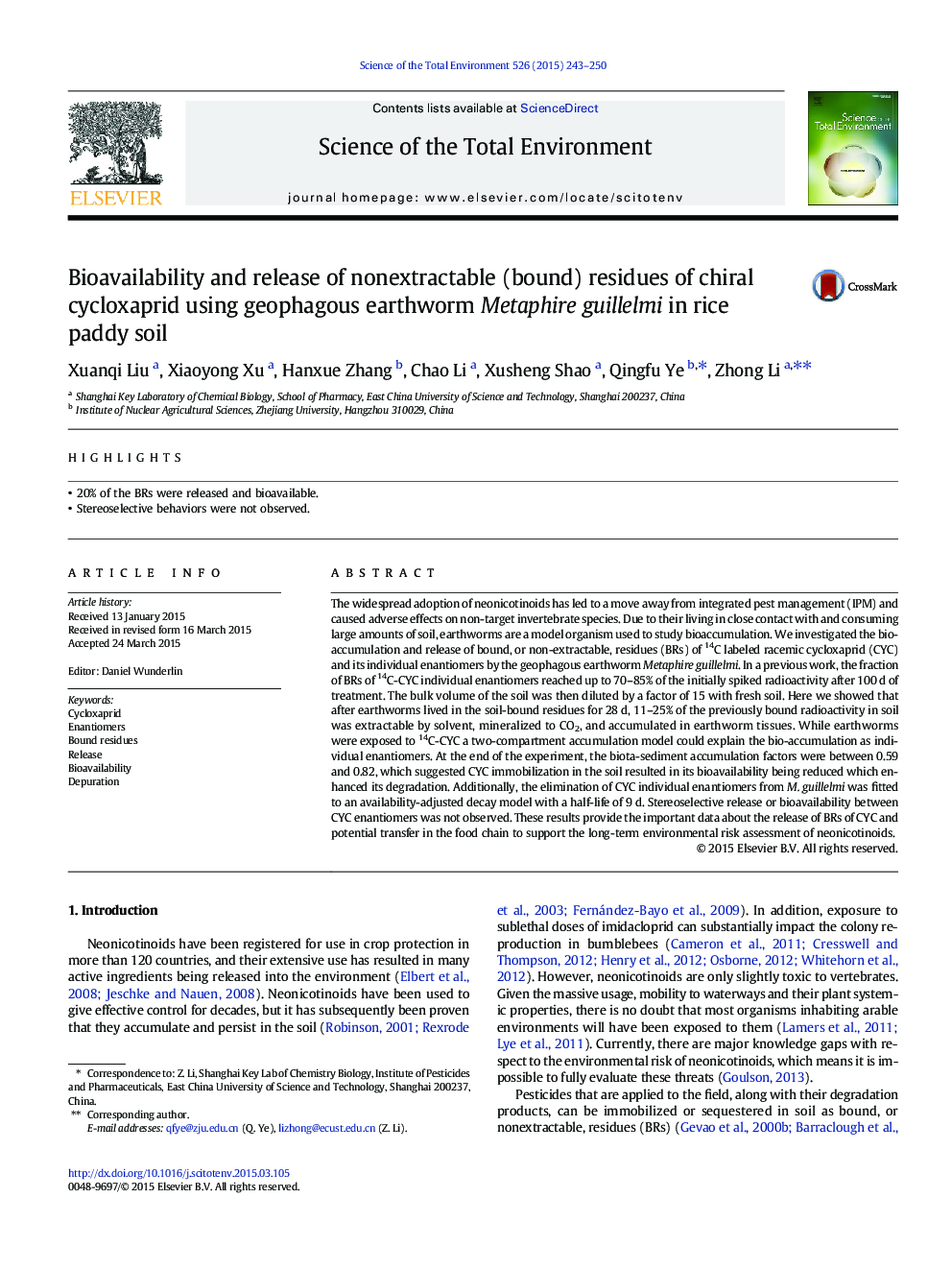| کد مقاله | کد نشریه | سال انتشار | مقاله انگلیسی | نسخه تمام متن |
|---|---|---|---|---|
| 4428372 | 1619756 | 2015 | 8 صفحه PDF | دانلود رایگان |

• 20% of the BRs were released and bioavailable.
• Stereoselective behaviors were not observed.
The widespread adoption of neonicotinoids has led to a move away from integrated pest management (IPM) and caused adverse effects on non-target invertebrate species. Due to their living in close contact with and consuming large amounts of soil, earthworms are a model organism used to study bioaccumulation. We investigated the bioaccumulation and release of bound, or non-extractable, residues (BRs) of 14C labeled racemic cycloxaprid (CYC) and its individual enantiomers by the geophagous earthworm Metaphire guillelmi. In a previous work, the fraction of BRs of 14C-CYC individual enantiomers reached up to 70–85% of the initially spiked radioactivity after 100 d of treatment. The bulk volume of the soil was then diluted by a factor of 15 with fresh soil. Here we showed that after earthworms lived in the soil-bound residues for 28 d, 11–25% of the previously bound radioactivity in soil was extractable by solvent, mineralized to CO2, and accumulated in earthworm tissues. While earthworms were exposed to 14C-CYC a two-compartment accumulation model could explain the bio-accumulation as individual enantiomers. At the end of the experiment, the biota-sediment accumulation factors were between 0.59 and 0.82, which suggested CYC immobilization in the soil resulted in its bioavailability being reduced which enhanced its degradation. Additionally, the elimination of CYC individual enantiomers from M. guillelmi was fitted to an availability-adjusted decay model with a half-life of 9 d. Stereoselective release or bioavailability between CYC enantiomers was not observed. These results provide the important data about the release of BRs of CYC and potential transfer in the food chain to support the long-term environmental risk assessment of neonicotinoids.
Journal: Science of The Total Environment - Volume 526, 1 September 2015, Pages 243–250